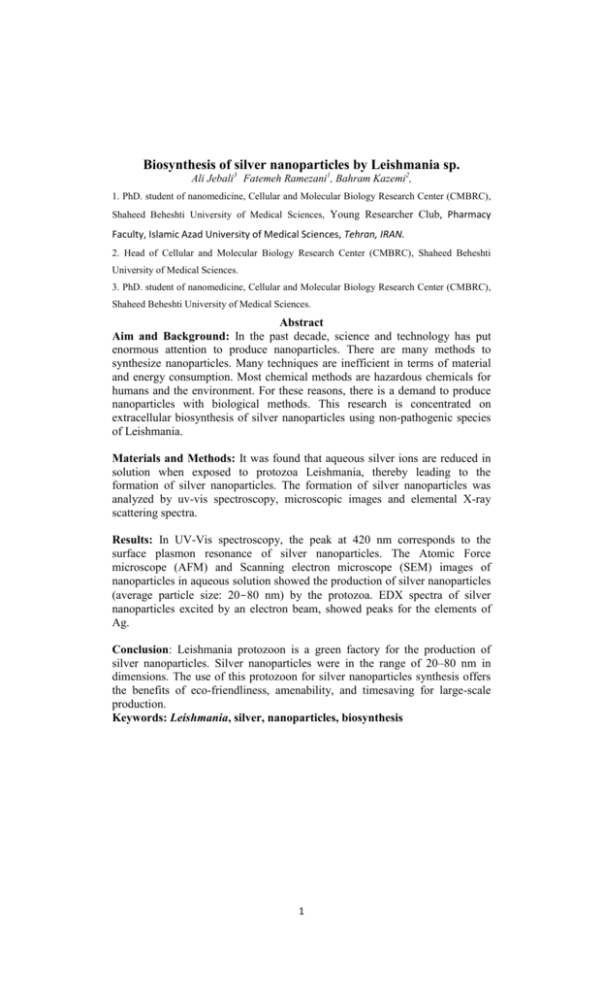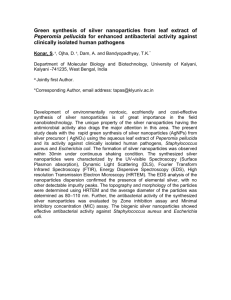Biosynthesis of silver nanoparticles by Leishmania sp.
advertisement

Biosynthesis of silver nanoparticles by Leishmania sp. Ali Jebali3 Fatemeh Ramezani1, Bahram Kazemi2, 1. PhD. student of nanomedicine, Cellular and Molecular Biology Research Center (CMBRC), Shaheed Beheshti University of Medical Sciences, Young Researcher Club, Pharmacy Faculty, Islamic Azad University of Medical Sciences, Tehran, IRAN. 2. Head of Cellular and Molecular Biology Research Center (CMBRC), Shaheed Beheshti University of Medical Sciences. 3. PhD. student of nanomedicine, Cellular and Molecular Biology Research Center (CMBRC), Shaheed Beheshti University of Medical Sciences. Abstract Aim and Background: In the past decade, science and technology has put enormous attention to produce nanoparticles. There are many methods to synthesize nanoparticles. Many techniques are inefficient in terms of material and energy consumption. Most chemical methods are hazardous chemicals for humans and the environment. For these reasons, there is a demand to produce nanoparticles with biological methods. This research is concentrated on extracellular biosynthesis of silver nanoparticles using non-pathogenic species of Leishmania. Materials and Methods: It was found that aqueous silver ions are reduced in solution when exposed to protozoa Leishmania, thereby leading to the formation of silver nanoparticles. The formation of silver nanoparticles was analyzed by uv-vis spectroscopy, microscopic images and elemental X-ray scattering spectra. Results: In UV-Vis spectroscopy, the peak at 420 nm corresponds to the surface plasmon resonance of silver nanoparticles. The Atomic Force microscope (AFM) and Scanning electron microscope (SEM) images of nanoparticles in aqueous solution showed the production of silver nanoparticles (average particle size: 20-80 nm) by the protozoa. EDX spectra of silver nanoparticles excited by an electron beam, showed peaks for the elements of Ag. Conclusion: Leishmania protozoon is a green factory for the production of silver nanoparticles. Silver nanoparticles were in the range of 20–80 nm in dimensions. The use of this protozoon for silver nanoparticles synthesis offers the benefits of eco-friendliness, amenability, and timesaving for large-scale production. Keywords: Leishmania, silver, nanoparticles, biosynthesis 1 2









